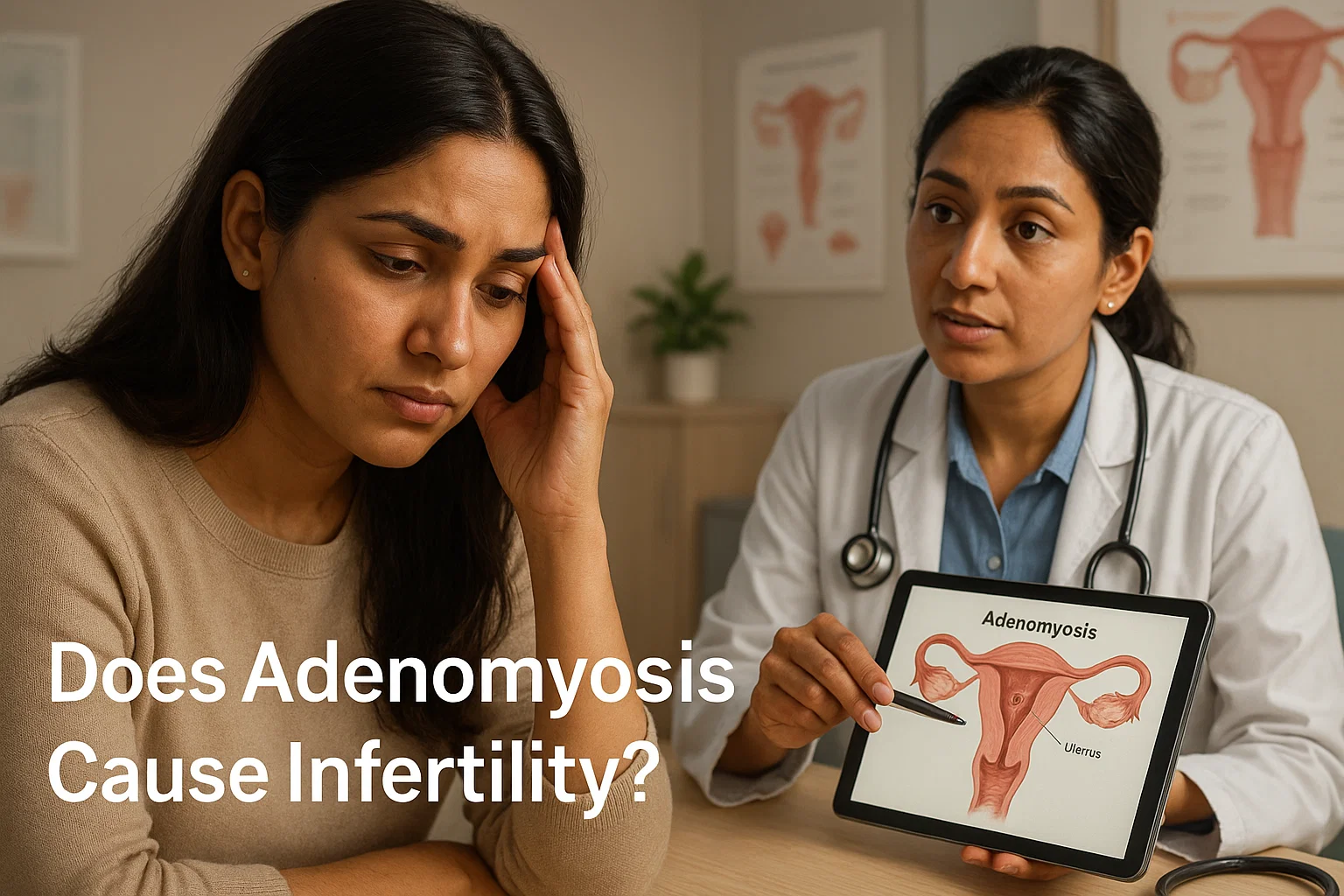What is Adenomyosis?
Adenomyosis is a condition where the endometrium or the inner lining of the uterus invades into the uterine wall. It typically affects women at a late child-bearing age and disappears during menopause. It affects women around the ages of 40 and 50 years.
Certain factors increase the chances of an Adenomyosis. These are-
- Prior surgery involving the uterus such as a C –section or Fibroid removal
- Childbirth
- Age
- Certain hormones such as estrogen, progesterone, prolactin, follicle-stimulating hormone
What are the Symptoms of Adenomyosis?
Most women tend to overlook the symptoms of Adenomyosis because they tend to be mild and hence go unnoticed.
Some symptoms such as severe menstrual cramps, tenderness around the uterus and the pelvis, heavy and prolonged bleeding during menstruation are relatively mild.
Some women may experience extreme pain and menstrual cramps, exceptionally high bleeding, at times lumpy blood clots during their periods.
Therefore, the range of symptoms is fairly wide. Although, the condition is not harmful and the treatment is fairly simple, addressing the problem at an early stage is important to avoid further complications.
One of the serious implications of an untreated Adenomyosis is chronic anemia due to excessive bleeding, leading to fatigue and other health issues.
Does Adenomyosis cause female Infertility?
Studies are unclear and haven’t been able to establish a clear connection between Adenomyosis and infertility in women.
This is because most women with Adenomyosis also suffer from Endometriosis, which is a condition where the tissues that grow inside the uterine cavity begin to intrude outside the uterine cavity.
Even the correlation between these two conditions has a wide range falling anywhere between 30 to 70 %. This is due to the techniques used in diagnosis.
Both conditions have similar symptoms of heavy bleeding and menstrual cramps. Hence, proper diagnosis of the exact problem is important.
Just as the exact correlation between Endometriosis and Infertility isn’t clear, so is the co-relation between Adenomyosis and infertility is uncertain.
Although, symptoms such as cramping, vaginal and pelvic tenderness may impact fertility adversely.
These may impact libido and in turn fertility. Sometimes there is an adverse effect on the contractions in the vaginal cavity and in the uterus. This may hinder fertilization.
However, more studies are the need of the hour to establish a clear picture.
Diagnosing Adenomyosis
An MRI or a Transvaginal Ultrasound are two trusted methods to diagnose the Adenomyosis.
Initially, a doctor conducts a physical examination of the pelvis to see if the uterus is enlarged or tender.
Another method of diagnosing is Sonohysterography. This method involves injecting a saline solution through a tiny tube into the uterus during an ultrasound.
Treating Adenomyosis-
The course of the treatment depends upon various factors such as the severity of the problem, whether childbirth is completed and the age of the patient. If the symptoms are mild, sometimes over the counter medications can help manage the symptoms of cramping and bleeding.
Other treatment methods are-
- Hormone therapy- Levonorgestrel-releasing IUD (which is inserted into the uterus), aromatase inhibitors, and GnRH analogs are release to help with the symptoms.
- Uterine Artery embolization- This is a technique that cuts the flow of blood to the blood vessels that lead to Adenomyosis. This results in the swelling to shrink and disappear.
- Endometrial Ablation- This helps destroy the lining of the uterus where the Adenomyosis hasn’t gone too deep into the uterine wall. This technique is minimally invasive.
- Hysterectomy- In conditions where the symptoms are severe, the only course of action is a hysterectomy or the removal of the uterus. This is a definitive cure.






